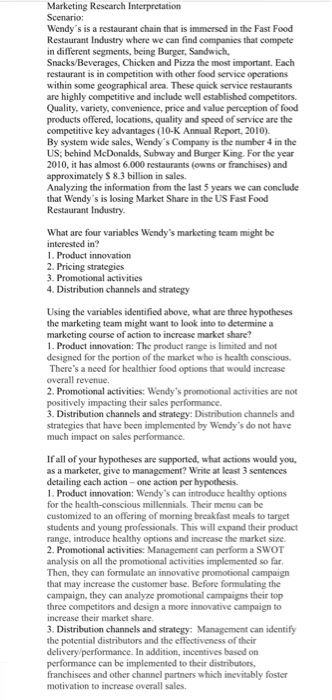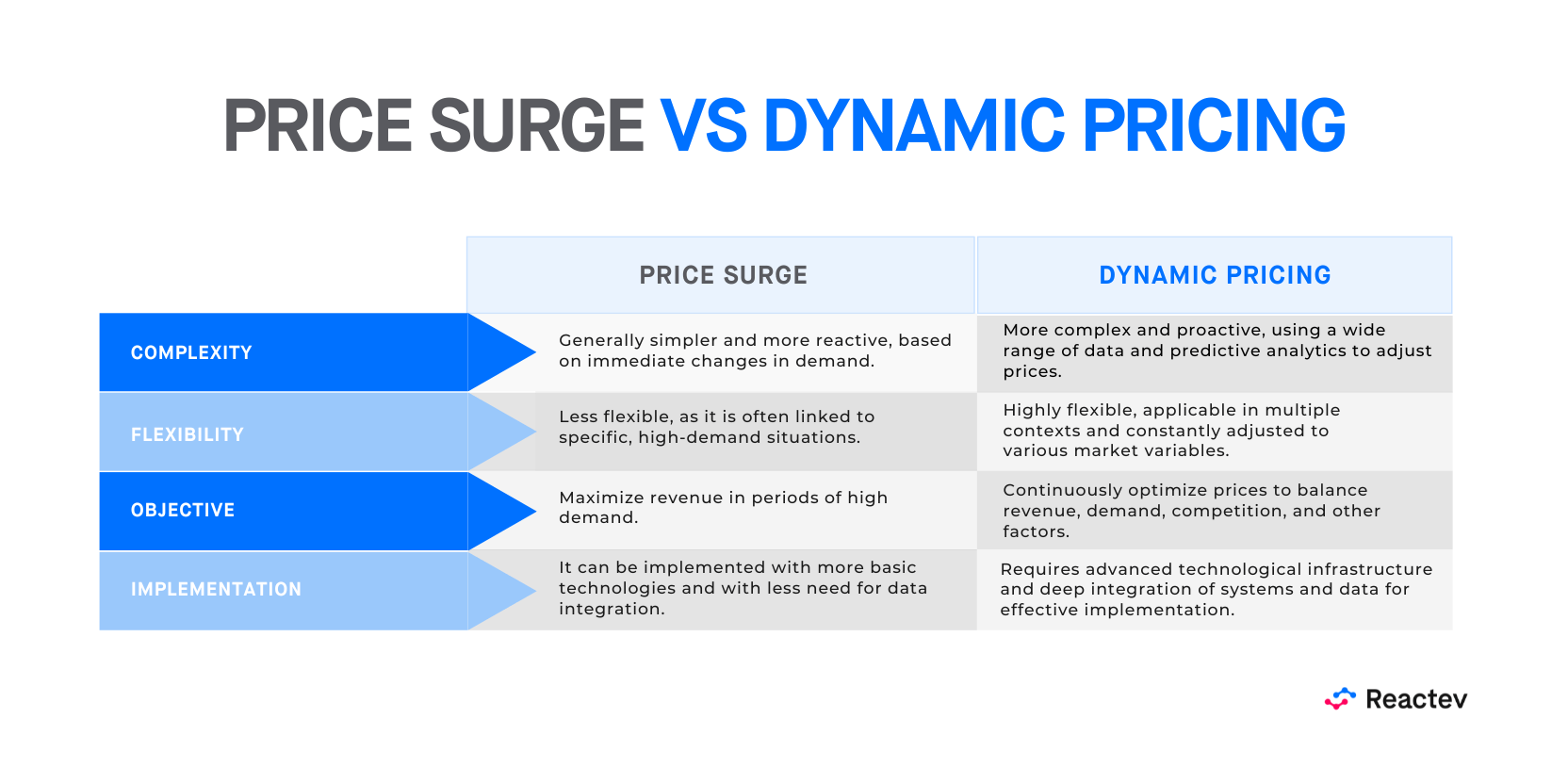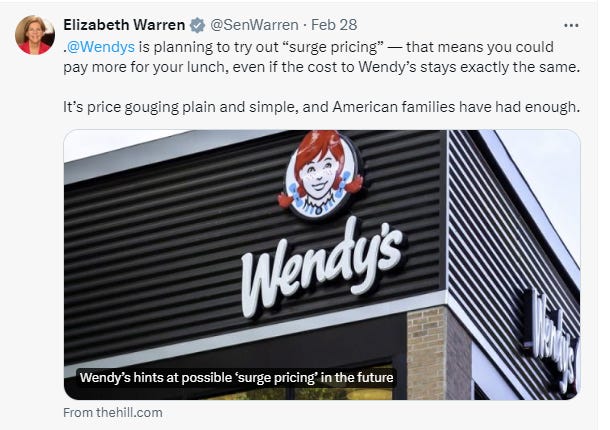Wendy’s recent announcement of implementing surge pricing has sparked widespread debate and criticism, raising questions about how such out-of-touch corporate decisions make it through the approval process. The fast-food chain’s plan to adjust menu prices based on demand—similar to ride-sharing apps—has left many customers and industry experts baffled. Critics argue that this strategy risks alienating loyal patrons and reflects a disconnect between corporate marketing teams and everyday consumer expectations. As businesses increasingly experiment with dynamic pricing models, Wendy’s move highlights the fine line between innovation and overreach, prompting a closer look at how marketing strategies are vetted and approved in today’s competitive landscape.
Wendy's New Surge Pricing: How Does Out-of-Touch Corporate Marketing Get Approved?
Wendy's recent announcement of implementing surge pricing has sparked widespread criticism and confusion. The fast-food chain plans to adjust menu prices based on demand, similar to ride-sharing apps like Uber. This decision has raised questions about how such a controversial and seemingly out-of-touch marketing strategy could gain approval. Critics argue that this move alienates customers, especially in a time when affordability is a major concern for many. The backlash highlights a growing disconnect between corporate decision-making and consumer expectations.
See Also Looking for Some Advice as We Ramp Up Our B2B Marketing Efforts.
Looking for Some Advice as We Ramp Up Our B2B Marketing Efforts.What Is Wendy's Surge Pricing Model?
Wendy's surge pricing model involves dynamically adjusting menu prices during peak hours or high-demand periods. For example, a burger that costs $5 during off-peak times might increase to $7 during lunch or dinner rushes. The company claims this approach will help manage demand and improve efficiency. However, many customers view it as a way to exploit busy times, leading to frustration and potential loss of loyalty.
Why Did Wendy's Think Surge Pricing Was a Good Idea?
Wendy's likely saw surge pricing as an innovative way to maximize profits and modernize its operations. The company may have been inspired by the success of dynamic pricing in other industries, such as ride-sharing and airlines. However, the fast-food industry operates differently, with customers prioritizing affordability and consistency. The decision reflects a lack of understanding of its core customer base and their expectations.
See Also Paid $2900 for a Digital Course. Idk What to Do.
Paid $2900 for a Digital Course. Idk What to Do.How Does Corporate Marketing Approve Such Controversial Strategies?
Corporate marketing teams often rely on data-driven insights and market trends to make decisions. In Wendy's case, the approval of surge pricing suggests a focus on short-term financial gains rather than long-term customer satisfaction. The lack of consumer feedback or testing before implementation indicates a potential disconnect between executives and the realities of their target audience.
What Are the Potential Consequences of Surge Pricing for Wendy's?
The introduction of surge pricing could have several negative consequences for Wendy's. Customers may feel exploited and choose to dine elsewhere, leading to a decline in sales. Additionally, the brand's reputation could suffer, as it may be perceived as greedy or out of touch. Competitors who maintain consistent pricing could gain an advantage, further impacting Wendy's market share.
See Also This Is a Long Shot, but Has Anyone Done Marketing for a Funeral Home?
This Is a Long Shot, but Has Anyone Done Marketing for a Funeral Home?How Are Consumers Reacting to Wendy's Surge Pricing Announcement?
Consumer reaction to Wendy's surge pricing has been overwhelmingly negative. Social media platforms are flooded with criticism, with many users vowing to boycott the chain. The announcement has also sparked debates about corporate greed and the ethics of dynamic pricing in essential industries like food. This backlash underscores the importance of aligning marketing strategies with consumer values.
| Key Aspect | Details |
|---|---|
| Surge Pricing Model | Dynamic pricing based on demand, similar to ride-sharing apps. |
| Consumer Reaction | Overwhelmingly negative, with calls for boycotts. |
| Corporate Motivation | Maximizing profits and modernizing operations. |
| Potential Consequences | Loss of customer loyalty and brand reputation damage. |
| Marketing Approval Process | Focus on data-driven insights, lack of consumer feedback. |
What are four variables Wendy's marketing team might be interested in?

Customer Demographics
Wendy's marketing team is likely interested in customer demographics to better understand their target audience. This includes:
- Age groups: Identifying the age range of their primary customers to tailor marketing campaigns.
- Gender: Understanding if their products appeal more to a specific gender.
- Income levels: Determining the spending power of their customers to adjust pricing strategies.
Consumer Preferences
Understanding consumer preferences is crucial for Wendy's marketing team to align their offerings with customer desires. Key areas include:
- Menu preferences: Identifying popular items to promote or improve.
- Dietary trends: Adapting to trends like plant-based or low-calorie options.
- Flavor profiles: Catering to regional or cultural taste preferences.
Competitor Analysis
Wendy's marketing team must analyze competitor strategies to stay ahead in the market. This involves:
- Pricing strategies: Comparing prices to ensure competitiveness.
- Promotional campaigns: Evaluating competitors' marketing tactics to identify gaps or opportunities.
- Market positioning: Understanding how competitors position themselves to differentiate Wendy's brand.
Sales Performance Metrics
Tracking sales performance metrics helps Wendy's marketing team measure success and identify areas for improvement. Key metrics include:
- Revenue growth: Monitoring overall sales trends over time.
- Product performance: Analyzing which items contribute most to sales.
- Seasonal trends: Identifying peak sales periods to optimize marketing efforts.
Digital Engagement
Wendy's marketing team focuses on digital engagement to connect with customers online. Important aspects include:
- Social media metrics: Tracking likes, shares, and comments to gauge brand interaction.
- Website traffic: Analyzing visitor behavior to improve user experience.
- Email campaign performance: Measuring open and click-through rates to refine communication strategies.
What is surge pricing in marketing?

What is Surge Pricing in Marketing?
Surge pricing is a dynamic pricing strategy used in marketing where the cost of a product or service fluctuates based on real-time demand. This approach is commonly employed by businesses to maximize revenue during peak periods when demand is high. The concept is widely used in industries such as ride-sharing, hospitality, and e-commerce. By adjusting prices dynamically, companies can balance supply and demand while optimizing profitability.
How Does Surge Pricing Work?
Surge pricing operates by analyzing real-time data to determine the level of demand for a product or service. When demand exceeds supply, prices increase to incentivize more supply or reduce demand. Here’s how it works:
- Demand Monitoring: Algorithms track customer activity and demand patterns in real-time.
- Price Adjustment: Prices are automatically increased during high-demand periods to reflect the scarcity of supply.
- Customer Response: Customers may choose to delay their purchase or pay the higher price, depending on urgency.
Benefits of Surge Pricing for Businesses
Surge pricing offers several advantages for businesses, including:
- Revenue Maximization: Higher prices during peak times lead to increased profits.
- Supply Management: Encourages suppliers or service providers to meet high demand.
- Market Efficiency: Balances supply and demand, reducing overbooking or shortages.
Challenges of Surge Pricing
While surge pricing can be beneficial, it also presents challenges:
- Customer Backlash: Sudden price increases may frustrate customers and harm brand loyalty.
- Transparency Issues: Lack of clear communication about pricing changes can lead to distrust.
- Regulatory Concerns: Some regions have regulations limiting dynamic pricing practices.
Examples of Surge Pricing in Different Industries
Surge pricing is applied across various industries, including:
- Ride-Sharing: Companies like Uber and Lyft increase fares during busy hours or bad weather.
- Hospitality: Hotels and airlines raise prices during holidays or special events.
- E-Commerce: Online retailers adjust prices based on demand trends or inventory levels.
What happened to Wendy's surge pricing?

What is Wendy's Surge Pricing?
Wendy's surge pricing was a dynamic pricing strategy announced by the fast-food chain in early 2024. The concept involved adjusting menu prices based on demand, similar to how ride-sharing apps like Uber operate. During peak hours, such as lunch or dinner, prices would increase, while they would decrease during slower periods. The goal was to optimize revenue and manage customer flow more efficiently.
- Dynamic pricing was the core idea behind Wendy's surge pricing.
- Prices would fluctuate based on demand and time of day.
- The strategy aimed to balance customer traffic and profitability.
Why Did Wendy's Announce Surge Pricing?
Wendy's announced surge pricing as part of a broader strategy to modernize its operations and increase profitability. The company planned to implement this system using digital menu boards and AI technology to adjust prices in real-time. The announcement was made during an earnings call, where Wendy's executives highlighted the potential benefits of this approach.
- The decision was driven by the need to boost revenue during peak hours.
- Wendy's aimed to leverage technology and data to optimize pricing.
- The company believed this strategy would improve operational efficiency.
Public Backlash Against Wendy's Surge Pricing
Following the announcement, Wendy's faced significant public backlash. Customers expressed frustration and confusion over the idea of paying more for the same items during busy times. Social media platforms were flooded with criticism, and many people vowed to boycott the chain. The negative reaction highlighted the challenges of implementing dynamic pricing in the fast-food industry.
- Customers criticized the unfairness of paying higher prices during peak hours.
- Social media backlash led to a public relations crisis for Wendy's.
- Many consumers threatened to switch to competitors.
Wendy's Response to the Controversy
In response to the backlash, Wendy's issued a statement clarifying its intentions. The company emphasized that the surge pricing strategy was still in the testing phase and that no final decisions had been made. Wendy's also reassured customers that the goal was not to exploit them but to explore innovative ways to enhance the dining experience.
- Wendy's clarified that the plan was experimental and not yet implemented.
- The company stressed its commitment to customer satisfaction.
- Wendy's promised to consider feedback before moving forward.
Current Status of Wendy's Surge Pricing
As of now, Wendy's surge pricing has not been implemented. The company has paused its plans due to the overwhelming negative response from customers. While Wendy's has not completely abandoned the idea, it is reevaluating the strategy to address concerns and explore alternative approaches to dynamic pricing.
- The surge pricing plan is on hold indefinitely.
- Wendy's is exploring alternative strategies to achieve similar goals.
- The company remains open to innovative pricing models in the future.
Frequently Asked Questions from Our Community
What is Wendy's new surge pricing and how does it work?
Wendy's new surge pricing is a dynamic pricing strategy where menu prices fluctuate based on demand, similar to how ride-sharing apps like Uber adjust fares during peak times. This means that during busy hours, such as lunch or dinner rushes, customers may pay higher prices for their meals. The idea is to manage customer flow and optimize revenue, but it has sparked significant backlash from consumers who feel it unfairly penalizes them for dining during popular times.
Why is Wendy's surge pricing considered out of touch with consumers?
Wendy's surge pricing is seen as out of touch because it ignores the economic pressures many consumers are already facing, such as inflation and rising food costs. Many view it as a corporate misstep that prioritizes profit over customer satisfaction. Additionally, the fast-food industry has long been associated with affordability, and this move risks alienating loyal customers who expect consistent pricing. Critics argue that it reflects a lack of understanding of the average consumer's financial struggles.
How does corporate marketing like this get approved?
Corporate marketing decisions, such as Wendy's surge pricing, often go through multiple layers of approval, including input from executives, market analysts, and focus groups. However, this strategy likely reflects a disconnect between corporate decision-makers and the everyday experiences of their customers. Companies sometimes prioritize short-term financial gains or innovative trends without fully considering the potential backlash or long-term impact on their brand reputation. In this case, the approval process may have underestimated the negative public reaction.
What are the potential consequences of Wendy's surge pricing for the brand?
The introduction of surge pricing could have several negative consequences for Wendy's. It may lead to a loss of customer trust and loyalty, as many view the strategy as unfair and exploitative. Competitors could capitalize on this by promoting their own consistent pricing models, further damaging Wendy's market position. Additionally, the backlash could result in negative media coverage and a decline in sales, forcing the company to reconsider or abandon the strategy altogether. Ultimately, it risks tarnishing Wendy's reputation as a customer-friendly fast-food chain.
Leave a Reply


Articles of interest